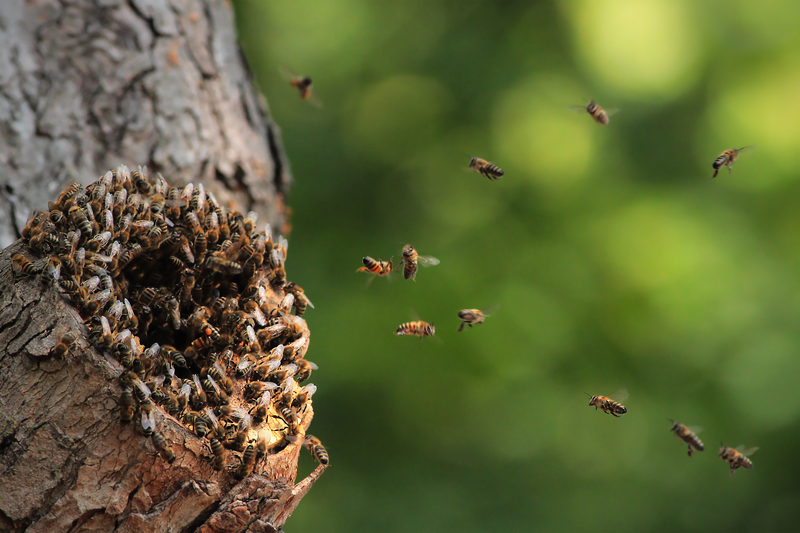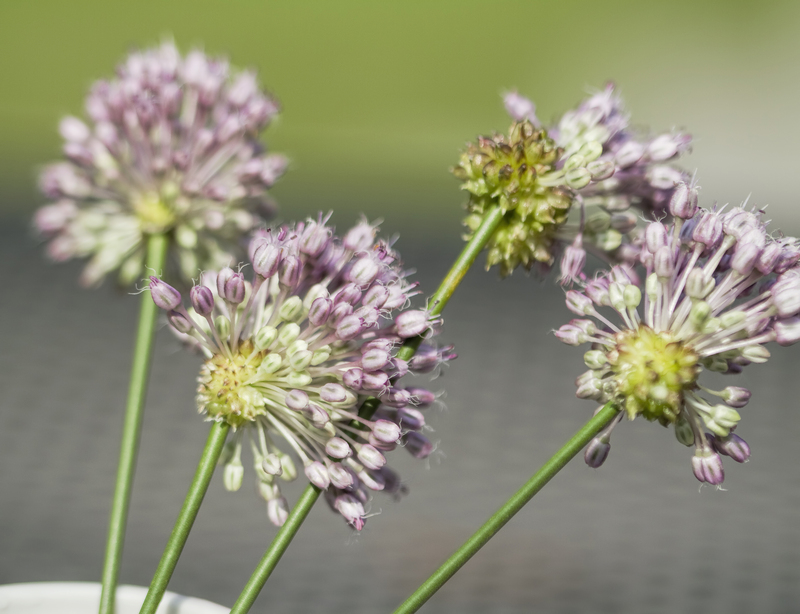Steps to Crafting a Kid-Approved Garden
Posted on 18/08/2025
Steps to Crafting a Kid-Approved Garden
Creating a vibrant, safe, and interactive garden for children is an adventure that combines fun, learning, and creativity. Transforming your outdoor space into a kid-friendly wonderland not only nurtures a love for nature but also helps children develop important life skills. In this comprehensive, SEO-optimized guide, discover essential steps, tips, and ideas to design and grow a kid-approved garden that appeals to young minds while being practical for families.
Why Build a Kid-Approved Garden?
Before delving into the actual steps, it's worth understanding the remarkable benefits a garden specially tailored for children can provide:
- Encourages outdoor play: Reduces screen time, promotes physical activity and strengthens motor skills.
- Fosters curiosity and responsibility: Growing and caring for plants teaches patience, empathy, and responsibility.
- Enhances learning opportunities: Scientific exploration, basic math concepts, and environmental awareness blossom in a garden setting.
- Boosts family bonds: Working together in the garden becomes a shared adventure and builds lasting memories.

The Essential Steps for Crafting a Kid-Approved Garden
Designing a child-friendly garden is more than just planting colorful flowers. It is a thoughtful process that considers safety, accessibility, interest, and creativity. Here are the step-by-step guidelines to help you construct a successful garden paradise your children will love.
1. Involve the Kids from the Start
Engagement breeds excitement! Make your children active participants in the garden's creation. Sit down together and brainstorm ideas. Encourage them to share their favorite plants, vegetables, or colors they would like to see. Not only does this make the project more fun, but it empowers kids and gives them a sense of ownership.
- Let children draw their garden vision on paper.
- Flip through seed catalogues or garden magazines together for inspiration.
- Have them name their garden (e.g., "Jessica's Jungle" or "Sam's Sprout Spot").
2. Choose the Perfect Location
The ideal kids' garden space should be easily visible and accessible, promoting safety and convenience. Select a spot with ample sunlight (6-8 hours daily), good drainage, and within your sight lines when children are present.
- Safety First: Avoid areas near roads or driveways.
- Sunlight: Most edible crops and vibrant flowers thrive with plenty of sun.
- Accessibility: Make sure kids can easily reach the garden from the house.
- Water Access: Choose a spot close to a hose or a rain barrel for easy watering.
Tip: If you have limited space, consider container planting on patios, balconies, or even windowsills to make a compact but effective child-friendly gardening area.
3. Design with Safety and Accessibility in Mind
Little ones love to explore, touch, and sometimes taste the plants around them. When creating your kid-safe garden, focus on:
- Low-toxicity plants: Avoid species that are toxic or have thorns/thistles. Choose non-toxic, edible, or sensory plants that are safe to handle and taste.
- Clear, wide pathways: Lay down mulch, stepping stones, or pavers so kids can skip and stroll easily, even after rain.
- Raised beds or containers: These allow children to reach soil and plants easily and help reduce weeds.
- Flexible seating: Benches, beanbags, or logs can provide rest spots or reading nooks.
- Enclosures: Fences, low walls, or natural barriers can define boundaries for play and keep children safe.
Remember: Always supervise young children in the garden.
4. Select Engaging and Easy-to-Grow Plants
The heart of every child-oriented garden is its plants. Pick varieties that grow quickly, respond to touch, smell, or taste, and are visually appealing. Here are some favorites for a child-approved garden:
- Sunflowers: Tall, cheerful, and fast-growing.
- Snapdragons and pansies: Bright colors and "faces" that amuse kids.
- Strawberries and cherry tomatoes: Sweet, bite-sized, and edible.
- Mint, basil, and lavender: Scented leaves offer a sensory delight.
- Pumpkins and gourds: Fun to plant, watch grow, and harvest in autumn.
- Sensory plants: Lamb's ear (soft to touch), ornamental grasses (rustle in breeze), and nasturtiums (spicy edible flowers).
- Fast-germinating seeds: Radishes, peas, beans--give quick results to keep children interested.
Let children pick and plant their favorites for maximum enthusiasm.
5. Plan for Play: Whimsical Features and Creative Spaces
To keep your new child's garden endlessly engaging, incorporate magical, interactive elements tailored to different age groups. A few creative ideas include:
- Fairy or dinosaur gardens: Tuck tiny figurines among plants to inspire storytelling and imaginative play.
- Mud kitchens: Set up an area with old pots, pans, and utensils for outdoor "cooking."
- Secret hideaways: Willow tunnels, bean teepees, or sunflower houses create enchanting hidey-holes for kids.
- Stepping stones or balance beams: Add movement and adventure while building coordination.
- Art stations: Outdoor chalkboards, painted rocks, or a place to display homemade bird feeders or wind chimes.
These playful touches transform a simple garden into an experiential playground where learning and fun coexist.
6. Provide Kid-Friendly Tools and Equipment
Sizing matters when it comes to gardening with children. Invest in real (not toy) but child-sized tools for digging, watering, and planting. Some essentials:
- Small trowels and spades: Lightweight, with easy grips for little hands.
- Watering cans: Encourage children to practice careful watering with a manageable, leak-proof can.
- Gardening gloves: Protect small hands from dirt, bugs, and minor scrapes.
- Kneeling mats: Make soil time more comfortable.
- Wheelbarrows: Let kids help transport soil or harvests around the garden.
Assign children "official" gardening jobs, like watering monitor or seed counter, to give them pride in their roles.
7. Teach and Explore: Make Gardening a Learning Adventure
Every moment in your kid-friendly garden is a chance to learn. Here's how to make the most of every opportunity:
- Show the life cycle: Let kids plant seeds, watch them grow, and harvest the results.
- Observe wildlife: Provide bird feeders, bug hotels, or toad houses to invite creatures and talk about their roles.
- Label everything: Use fun, waterproof plant markers--children can decorate them with names or drawings.
- Journal progress: Keep a garden diary for sketches, measurements, or photos through the season.
- Hold taste tests: Sample herbs, cherry tomatoes, peas, or edible flowers to talk about flavors and nutrition.
- Measure plants: Practice math by tracking growth week-by-week.
Learning in a child's garden is hands-on and memorable--perfect for curious minds and busy bodies!
8. Celebrate Achievements and Promote Ownership
Recognition motivates progress! When children see their efforts celebrated, they take pride and remain committed to the process:
- Celebrate first sprouts and blooms with a "garden party."
- Take photos for a garden scrapbook or family album.
- Let kids create signage for "their" beds or plots.
- Use the harvest for family meals, shared snacks, or even a little farmers market booth.
- Encourage kids to share their gardening stories with friends, family, or at school show-and-tell.
By fostering a sense of achievement, the garden becomes a treasured part of childhood memories.
Bonus Tips for a Successful Kid-Friendly Garden
- Encourage wildlife: Grow native flowers that attract pollinators like butterflies and bees or install a birdbath.
- Incorporate water play: A simple water table or shallow basin provides hours of safe fun and helps to water plants naturally.
- Plan for year-round interest: Mix evergreens, bulbs, and quick-growing annuals to ensure there's always something happening outdoors.
- Rotate crops: Trying new vegetables and flowers each year keeps children's interest fresh.
- Upcycle and reuse: Turn old boots, wagons, or buckets into quirky plant containers--a great lesson in recycling!
Common Mistakes to Avoid in a Kid-Approved Garden
- Overcomplicating the design: Less is more. Too many elements can overwhelm kids and complicate maintenance.
- Forgetting safety: Always research plants and materials for child-friendliness.
- Lack of involvement: If kids aren't engaged, they'll lose interest quickly--ask for input and involve them at every step.
- Neglecting supervision: Even the safest garden needs adult oversight, especially for very young children.

Conclusion: Start Planting, Start Playing!
With the right planning and a dash of creativity, crafting a kid-approved garden is an investment in your children's health, happiness, and growth. By following these steps--engagement, safety, plant choice, education, and celebration--you create much more than a children's garden: you nurture joy, discovery, and a lifelong love for the wonders of nature.
Are you ready to roll up your sleeves? Invite your kids to dream, dig, and delight in designing their piece of paradise... one seed, sprout, and giggle at a time!
Frequently Asked Questions About Kid-Friendly Gardens
What age is best to start gardening with kids?
Children as young as 2-3 years enjoy sensory play with soil, while ages 4 and up can help plant and care for easy crops. The key is to tailor activities and tools to your child's developmental level and interests.
Which plants are absolutely safe for children?
Some top choices include sunflowers, snapdragons, lettuce, peas, beans, strawberries, nasturtiums, and herbs like basil or mint. Always supervise and check that any plant you add to your child's garden is safe for handling and, if applicable, for tasting.
How can I keep my kid-friendly garden low-maintenance?
Opt for easy-care plants, raised beds or containers, and use thick mulch to suppress weeds. Regularly involve children in small, simple chores to keep up with day-to-day maintenance. Choose perennials that return each year for less annual planting.
Can gardens help picky eaters?
Absolutely! Kids are far more likely to taste and enjoy vegetables they have grown themselves. Give your children power to pick, plant, and harvest, and then celebrate their efforts with homegrown meals or snacks.
Ready to begin your own kid-approved garden? Every budding gardener starts with a single seed--plant yours today for a greener tomorrow!

